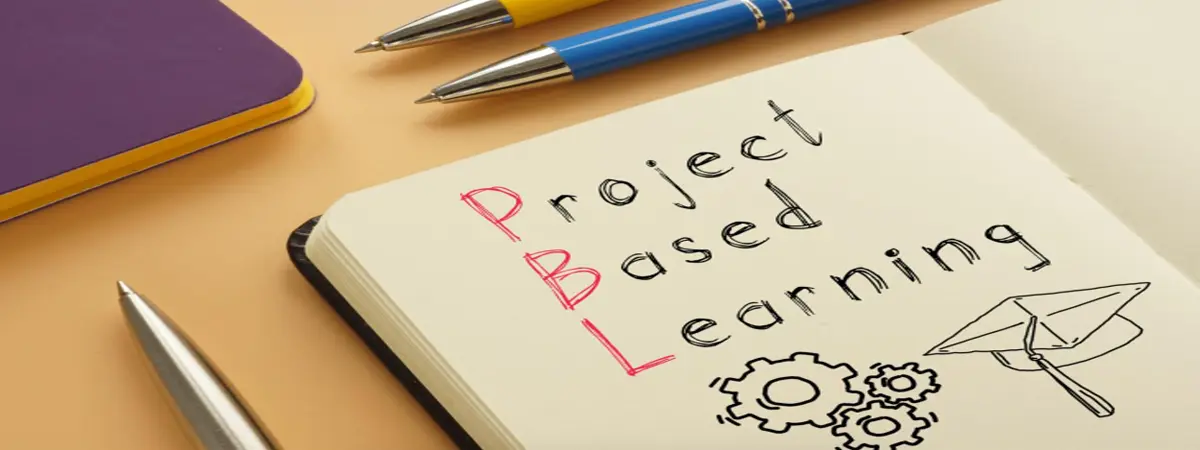- Posted on
- admin
- No Comments
How Project Based Learning Sparks Curiosity and Creativity
Education has always been about more than just memorizing facts—it’s about inspiring young minds to ask questions, think critically, and explore new ideas. In recent years, one teaching method has emerged as a powerful way to accomplish this: project based learning (PBL). This dynamic approach transforms classrooms into centers of discovery, where students take charge of their learning through hands-on projects that mirror real-world challenges.
Project-based learning isn’t a new concept, but its importance has grown dramatically in the modern world. As technology, globalization, and automation reshape the workforce, skills like creativity, curiosity, problem-solving, and collaboration are becoming as vital as academic knowledge. Traditional education models often focus on rote memorization and standardized testing, but PBL offers something different: it teaches students how to learn, not just what to learn.
By tackling meaningful projects that require critical thinking and teamwork, students gain a sense of ownership over their education. They move from passive listeners to active creators—an essential shift for developing lifelong learners in an ever-changing world.
Image Source: https://www.dreamstime.com/
What Is Project-Based Learning?
Project-based learning is an instructional approach in which students explore real-world problems or questions over an extended period. Rather than working toward a single correct answer, they investigate, collaborate, and tangibly present their findings—such as a presentation, product, experiment, or community initiative.
At its core, PBL revolves around inquiry. Students start with a driving question—something open-ended, complex, and relevant to their world. For example:
- How can we design a sustainable community garden for our neighborhood?
- What can we do to reduce plastic waste at our school?
- How might we create an app to help new students adjust to high school life?
These questions don’t have easy answers, and that’s the point. By engaging with authentic problems, students learn to think like scientists, designers, journalists, or entrepreneurs. They develop research skills, collaborate with peers, and learn how to apply academic knowledge to practical situations.
From Passive Learning to Active Exploration
Traditional education often emphasizes content delivery—teachers lecture, students take notes, and tests measure retention. While this method can efficiently cover curriculum standards, it doesn’t always inspire engagement or creativity.
Project-based learning flips that model on its head. Students become active participants in their own education. Instead of simply learning about science, they do science. Instead of reading about history, they investigate how historical decisions still impact their community today.
This active engagement fuels curiosity. When students are encouraged to ask questions and find their own answers, learning becomes an adventure rather than an obligation. They begin to see the relevance of their studies in everyday life, making the material more meaningful and memorable.
How PBL Encourages Creativity
Creativity thrives when students have freedom to explore, experiment, and fail safely. PBL provides that freedom by giving students autonomy over their projects. While teachers still guide and facilitate, the direction and outcome often depend on student choices.
Consider an art and science crossover project where students design eco-friendly packaging for a local business. They must research materials, test prototypes, and balance aesthetics with functionality. This type of interdisciplinary work forces students to think creatively and connect concepts across subjects—a key skill in both academic and professional settings.
PBL also encourages risk-taking. Because the process values exploration as much as results, students learn that mistakes are opportunities for growth. This mindset builds resilience and innovation, essential traits for success in the real world.
The Role of Collaboration and Communication
Creativity doesn’t exist in isolation. In most PBL settings, teamwork is central to success. Students must communicate effectively, delegate tasks, and negotiate differing ideas to reach a common goal.
These experiences mirror real-world professional environments, where collaboration and communication are crucial. Students learn how to listen actively, resolve conflicts, and combine their unique strengths to produce stronger outcomes.
For example, a team working on a public health awareness campaign might divide responsibilities: one student focuses on research, another on design, another on outreach. By pooling their talents, they not only create something impactful but also experience the synergy that comes from true collaboration.
Real-World Connections that Inspire
One of the reasons project-based learning sparks such deep curiosity is its connection to the real world. When students see that their projects can have actual impact—on their community, environment, or peers—they become genuinely invested in their work.
A project about local water quality, for instance, might involve collecting samples, analyzing data, and presenting findings to a city council. Students gain firsthand experience with civic engagement, environmental science, and public speaking—all while making a tangible difference.
These real-world connections also give purpose to academic content. Math becomes a tool for budgeting, science a means for solving problems, and writing a way to persuade or inform. When learning feels relevant, curiosity naturally follows.
In a project-based classroom, the tea
Teachers as Facilitators, Not Directors
cher’s role shifts from lecturer to facilitator. Instead of delivering answers, teachers guide students toward discovering them. They pose questions, provide resources, and encourage reflection—helping students develop independence and confidence in their own learning abilities.
This approach requires flexibility and trust. Teachers must allow projects to evolve organically, even when the outcomes are uncertain. The process can be messy, but that’s where the magic happens. Students learn to manage ambiguity, adapt to new challenges, and think critically about their progress.
Assessment in Project-Based Learning
Assessing creativity and curiosity isn’t as simple as grading a multiple-choice test. PBL emphasizes formative assessment—ongoing feedback throughout the project rather than one final evaluation.
Teachers often assess based on multiple factors:
- Research and planning process
- Collaboration and communication skills
- Problem-solving and innovation
- Reflection and self-assessment
- The quality and presentation of the final product
This holistic approach ensures that students are recognized not just for what they know, but for how they think, act, and learn.
The Emotional Benefits of PBL
Beyond academic skills, project-based learning nurtures emotional intelligence. Students develop perseverance as they face setbacks, empathy as they consider diverse perspectives, and confidence as they share their work with others.
In many cases, PBL gives students a voice. When they see their ideas respected and their work valued, they develop a sense of agency and purpose. This intrinsic motivation drives deeper engagement and a lifelong love of learning.
Additionally, projects often bring joy back into the classroom. Creativity is inherently satisfying—it energizes students and teachers alike. Stock photos of classrooms filled with hands-on activity, colorful prototypes, and enthusiastic collaboration capture the visible side of this energy, but the real transformation lies in the students’ sense of empowerment.
Integrating Technology in Project-Based Learning
Technology amplifies the power of PBL. Students can collaborate online, access global experts, and use digital tools to design, code, or create multimedia presentations. Virtual reality, video production, and simulation software all open new doors for creative exploration.
For instance, a geography project might use GIS mapping tools to study population changes, or a literature project might involve creating a short film adaptation of a classic story. These experiences merge technical and creative skills, preparing students for a future where both are equally valuable.
Building Curiosity Through Inquiry
At its heart, curiosity is about wonder—the desire to know more. Project-based learning keeps that spark alive by making questions, not answers, the centerpiece of education. Instead of memorizing facts about renewable energy, students might design their own small-scale solar device. Instead of reading about history, they could create a museum exhibit showcasing their local heritage.
By allowing exploration to lead the way, PBL transforms curiosity into action. Students learn how to ask better questions, gather reliable information, and evaluate multiple perspectives—skills that extend far beyond the classroom.
Preparing Students for an Unpredictable Future
The jobs of tomorrow will require adaptability, critical thinking, and creativity—skills that can’t be memorized or automated. Project-based learning equips students with exactly those abilities. It teaches them how to collaborate, how to approach problems from different angles, and how to turn ideas into action.
Just as importantly, it cultivates a mindset of curiosity and lifelong learning. In a world that changes daily, the ability to stay curious and creative is more than an asset—it’s a necessity.
The Future of Learning
As education continues to evolve, project-based learning stands as one of the most promising approaches for nurturing the next generation of innovators and thinkers. It bridges the gap between knowledge and application, between school and the real world.
When students are given the chance to create, explore, and connect, they discover that learning isn’t something that happens to them—it’s something they can drive themselves. That sense of ownership sparks a fire that can last a lifetime.
The classroom of the future won’t be defined by desks in rows or lectures from the front of the room. It will be defined by energy, curiosity, and imagination—students brainstorming ideas, building prototypes, debating solutions, and proudly presenting their work.
That’s the promise of project-based learning: an education that doesn’t just teach facts, but ignites minds.
Popular Courses



